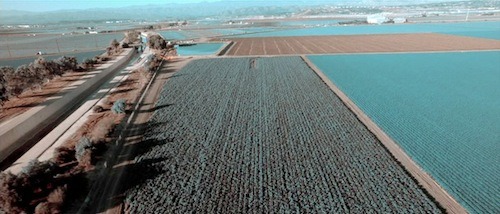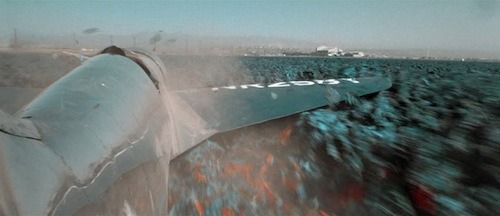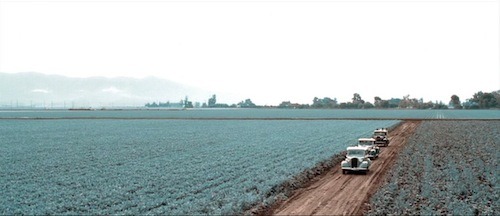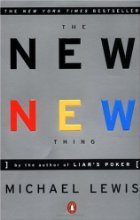Private world
Category: Personal
Not being able to govern events, I govern myself.
Obsession is the wellspring of genius and madness.
No dictatorship can tolerate jazz. It’s the first sign of a return to freedom.
Steve Jobs Playboy Interview from 1985
Steve Jobs Playboy Interview from 1985
It’s a great read when you know what the future holds, both for the industry, for Apple, and for Jobs himself. His foreshadowing of the Internet is particularly prescient, and passages like this make me think of his commencement address at Stanford:
If you want to live your life in a creative way, as an artist, you have to not look back too much. You have to be willing to take whatever you’ve done and whoever you were and throw them away. What are we, anyway? Most of what we think we are is just a collection of likes and dislikes, habits, patterns. At the core of what we are is our values, and what decisions and actions we make reflect those values. That is why it’s hard doing interviews and being visible: As you are growing and changing, the more the outside world tries to reinforce an image of you that it thinks you are, the harder it is to continue to be an artist, which is why a lot of times, artists have to go, “Bye. I have to go. I’m going crazy and I’m getting out of here.” And they go and hibernate somewhere. Maybe later they re-emerge a little differently.
Continuity gives us roots; change gives us branches, letting us stretch and grow and reach new heights.
WSJ: In China’s Orbit
Interesting article about 500 years of western predominance, and China’s grand strategy. Some facts to get your attention:
China’s has been the biggest and fastest of all the industrialization revolutions. In the space of 26 years, China’s GDP grew by a factor of 10. It took the U.K. 70 years after 1830 to grow by a factor of four. According to the International Monetary Fund, China’s share of global GDP (measured in current prices) will pass the 10% mark in 2013. Goldman Sachs continues to forecast that China will overtake the U.S. in terms of GDP in 2027, just as it recently overtook Japan.
Tip of the hat to @rfallini.
People blame their plight on the government and its leaders, or to management and its leaders. They may be correct. But will a change in leadership assure better living? What if the new leaders are no better? How could they be? By what method could new leaders bring improvement in living? Will best efforts bring improvement? Best efforts and hard work, not guided by new knowledge, they only dig deeper the pit that we are in.
Howard Hughes Camarillo Airport Connection
Came across this little gem in the Wikipedia article about Oxnard Air Force Base, or what is today Camarillo Airport:
Oxnard Airport was opened in 1934 by the County of Ventura and consisted of a 3,500 foot dirt runway … During the thirties Howard Hughes erected a tent on the airport to shelter his H-1 racer, which he tested from the Oxnard Airport.
All the more interesting considering that I always suspected the scene in The Aviator when Hughes crashes the H-1 into a beet field was filmed in Oxnard. Locals may recognize some of the nearby features in these shots (ignoring the simulated bipack color Scorsese annoyed us with), better to just watched on the DVD at 46:35:



Which pretty confidently puts the shooting location about here. The real event took place near Santa Ana, CA captured in this National Geographic photo.
Reading: The New New Thing
 As you can see, I’ve been on a bit of a Michael Lewis kick. Ironically, I’ve had this book the longest having picked it up at a discount bookstore in an outlet mall years ago. I was so proud of the deal I got ($4.50 for a $13.00 trade paperback) that I left the price sticker on the cover (typically a sin for the bibliophile). Groping around for something to distract myself from the misery of a cold which ruined our vacation plans a couple days ago, I finally took it off the shelf.
As you can see, I’ve been on a bit of a Michael Lewis kick. Ironically, I’ve had this book the longest having picked it up at a discount bookstore in an outlet mall years ago. I was so proud of the deal I got ($4.50 for a $13.00 trade paperback) that I left the price sticker on the cover (typically a sin for the bibliophile). Groping around for something to distract myself from the misery of a cold which ruined our vacation plans a couple days ago, I finally took it off the shelf.
The New New Thing follows Silicon Valley entrepreneur Jim Clark from Silicon Graphics to Netscape to Healtheon and beyond. It also spends an inordinate amount of time aboard his luxury sailing yacht Hyperion. In fact, it’s the highly detailed focus on the yacht I found to be somewhat tedious (although I must admit that it inspired my inner geek to explore home automation systems I can integrate with my Mac and iPhone). Being intimately familiar with the the browser wars and web technology, I also found some of those elements to be a bit personally redundant but certainly important to the lay reader.
There is no question Jim Clark is a visionary and great leader/attracter of engineering talent. He amassed a fortune by hitting not one, but three home runs (think billions not millions) in Silicon Valley. His restless nature, exploration and continuous learning are to be admired.
The author was clearly given amazing access to the Clark and the key players around him, which made me wonder why they permitted it. Lewis has a way of presenting the “characters” in his books in different lights; there are heros and villains, and certainly a point of view. It’s seems like a big chance for a businessman to take, but then again, being the central character in one of his books does seem to lead to a certain notoriety.
Lewis’ explanation (point of view) of the dot com phenomenon is concise and telling. You have a great idea, typically a recombination of existing talent and/or technology, but no real product. After attracting the credibility of venture capital investments, you build enough hype for an IPO, and bam, you now have valuable stock you can use to purchase the competitors and small companies with real products. You win.
It’s Lewis’ Hollywood analogy of Clark as the “Jack Nicholson” attached to the “script” of business idea (the “new new thing”) that explains the power dynamic Clark was able to harness in the Valley to build hype. Engineers and investors clambered to get involved in “Jim’s next thing”. Not a bad money machine.
Now off to write some automation code…
Lewis, Michael. The New New Thing.
